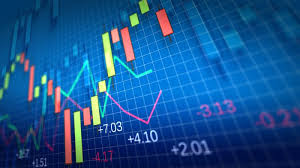High Dividend Stock Portfolio vs Dividend Index Fund, Which Is Better for You? (2)

03 High Dividend Equity Portfolio vs. Dividend Index Fund
The more clearly you look at dividend index funds, the more you'll wonder: would you get a higher yield by constructing your own portfolio of high-dividend stocks, when this kind of passive swaps and silly holdings can all yield good returns?
With-profits index funds have had good historical returns, but there are some limitations that nag at people.
1) Cost of operations
2) Additional costs of the transaction
Short-term, concentrated, mandatory index-tracking swaps will inevitably have an impact on share prices, generating additional "premiums" or "discounts" and resulting in additional transaction costs.
(3) Subscription redemption response
To respond to redemptions, the fund always needs to deploy some cash reserves, and must also sell passively if there are unexpectedly large redemptions that affect the fund's returns.
4) Hitting the New Stock
If you create your own portfolio of high-dividend stocks, hold them for the long term, have low overall costs, no pressure to bid and redeem, a wider choice of time to buy and sell, and the ability to hit new stocks, you'll theoretically get a better return.
Of course, creating a suitable high-dividend portfolio is no easy task and requires a certain level of diversification and scientific weighting that can make it difficult to track the index in a timely manner with limited capital, time effort and expertise.
04 Ideas for a High Dividend Stock Portfolio
Since we are becoming more knowledgeable about dividend funds and are thinking about high dividend stock portfolios, what are the best ideas for creating such high dividend stock portfolios based on dividend indices and dividend funds?
(1) "Full index" tracking portfolio
The rules and information for the dividend index are public, and information such as with-profits holdings, Top 20 trading volume rankings, and share changes are also in the fund reports, and based on this information, it is reasonable to create the appropriate portfolio to track the index.
Of course, using the dividend index as an anchor is not easy, this is the work of experts, not only requires a large amount of capital, and position weights and other difficult to update in a timely manner, in addition to the need for more time and energy investment.
2) Index Key Position Tracking Portfolio
Since the index components are too many and too complex, tracking key positions in the index, such as the Top 10, will be relatively easy. However, these constituents are a limited percentage of the market and can also be constantly changing and, crucially, unable to keep up with changes in the indexes' positions.
3) "Transfer-in" tracking portfolio
It is also an idea to gradually create a portfolio of stocks based on this "stock transfer", which takes place every December.
Until the stock, which is held, appears in the future index "transfer stocks", you can choose to sell at the right time to gain the spread.
4) Flexible DIY high dividend portfolio
As one learns more about dividend index funds, one also unravels the mystery of such funds, which derive their income from nothing more than dividends, stock investments (passive swaps and purchases), and gains from changes in fair value.
As a result of the near 100% position and long-term holdings, dividends and gains from changes in fair value are out of the fund manager's control and passive The transfer is also mandatory. The main reasons why this fund has good returns are: high dividend stocks (high quality companies), long term holdings (rising share prices), etc. , dividend income), and relatively vague valuation judgments (buy high dividends, sell low dividends).
So, in fact, do not need to strictly follow the dividend index, just need to create a relatively diversified, high-dividend stock portfolio, in the dividend yield is relatively high when buying, long-term holding, and then sell the dividend yield is relatively low, you can get a good "dividend + spread" income.
It's worth noting that, unlike PE (TTM) and PB metrics, you need to be aware of the lag in dividend yield. Dividend yield, based on a public company's cash dividend for the first half of last year, and this dividend, based on the company's operating performance the year before. There is a longer lag here.
Comprehensive reference to a variety of indicators, and then look at the dividend yield, you can try to avoid the trap of high dividend companies "value destruction".



